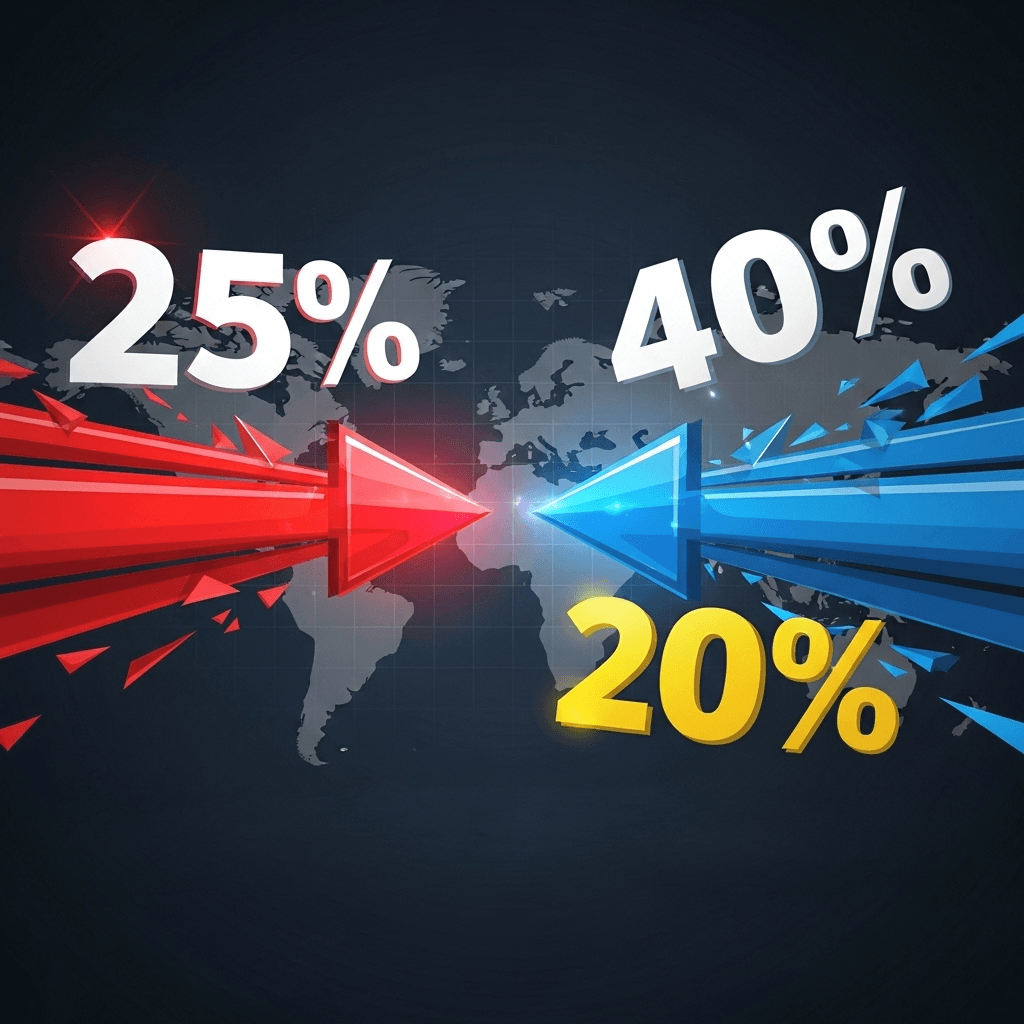Tomorrow, the world was set to experience a trade earthquake. Donald Trump planned to activate new tariffs against 14 countries including Japan and South Korea, but at the last minute postponed the deadline to August 1st. Trump’s reciprocal tariffs of up to 40% already have their specific targets, and three months of negotiations are drawing to a close. The president is thus opening a new chapter in his tough trade policy that could fundamentally impact global supply chains.
Dramatic Tariffs Strike Major Economies
Trump published literal “United States Tariff Letters” addressed to leaders of fourteen states on his Truth Social platform.
The highest tariffs will hit these key economies:
- Japan and South Korea – both countries face identical 25% tariffs, representing only a slight change from the April version (24% for Japan, 25% for Korea)
- Malaysia, Kazakhstan, and Tunisia – also 25% tariffs
- South Africa and Bosnia – 30% tariffs on all imports
- Highest rates – Myanmar and Laos with 40% tariffs
These trade tariffs will hit key export sectors of both countries including the automotive industry, electronics, and machinery. Paul Ashworth from Capital Economics notes that approximately half of exports from these economies will be affected by new tariff measures.
Deadline Delay as Tactical Move
President Trump signed an executive order moving tariff implementation from July 9th to August 1st, with Bloomberg reports indicating he described this new deadline as “not 100% firm.” This wording suggests continued room for negotiation.
Treasury Secretary Scott Bessent indicated that negotiations would be intensive: “We’re going to be very busy over the next 72 hours,” he said Sunday on CNN when discussing the time remaining before the original deadline.
Economic Impact and Market Response
Global markets reacted with mixed signals to the announcement:
- Asian indices – Nikkei 225 closed up 0.3%, Hang Seng strengthened by 1.1%
- US futures – Nasdaq and S&P 500 slightly up, Dow Jones futures declining
- Bond yields – 10-year US Treasury above 4.42%
Bloomberg Economics estimates that with full implementation of reciprocal tariffs, average tariffs on all US imports could rise from under 3% before Trump’s re-election in January to approximately 20%.
Negotiating Positions and Future Deals
Trump’s administration originally claimed it could close up to 90 deals during the 90-day pause. However, reality has been more modest – the US has only concluded framework agreements with:
- Vietnam – 20% tariff instead of the originally threatened 46%
- United Kingdom – considered protected from future tariffs
- China – preliminary framework agreement with unclear details
The European Union remains a key unknown. Brussels is reportedly rushing to conclude a deal this week, signaling willingness to accept a 10% universal tariff in exchange for sectoral exemptions.
Tariff Circumvention Risks and Retaliation
All of Trump’s letters contain clear warnings against tariff circumvention – meaning shipping goods through other countries so importers can avoid high tariffs. Such goods will face even higher tariffs.
Trump also preemptively warns against retaliatory measures: “If for any reason you decide to raise your tariffs, then whatever number you choose will be added to the 25% we charge.”
Geopolitical Context and BRICS
The president also announced a 10% tariff on BRICS countries as a tool to deter cooperation against American interests. China has already warned against restarting trade tensions and promised retaliation against countries making deals with the US to exclude China from supply chains.
The current situation represents a crucial test of Trump’s second-term trade strategy. While some countries like Vietnam and the United Kingdom managed to achieve more favorable terms, key economies including Japan and South Korea face the harsh reality of 25% tariffs starting in August.




